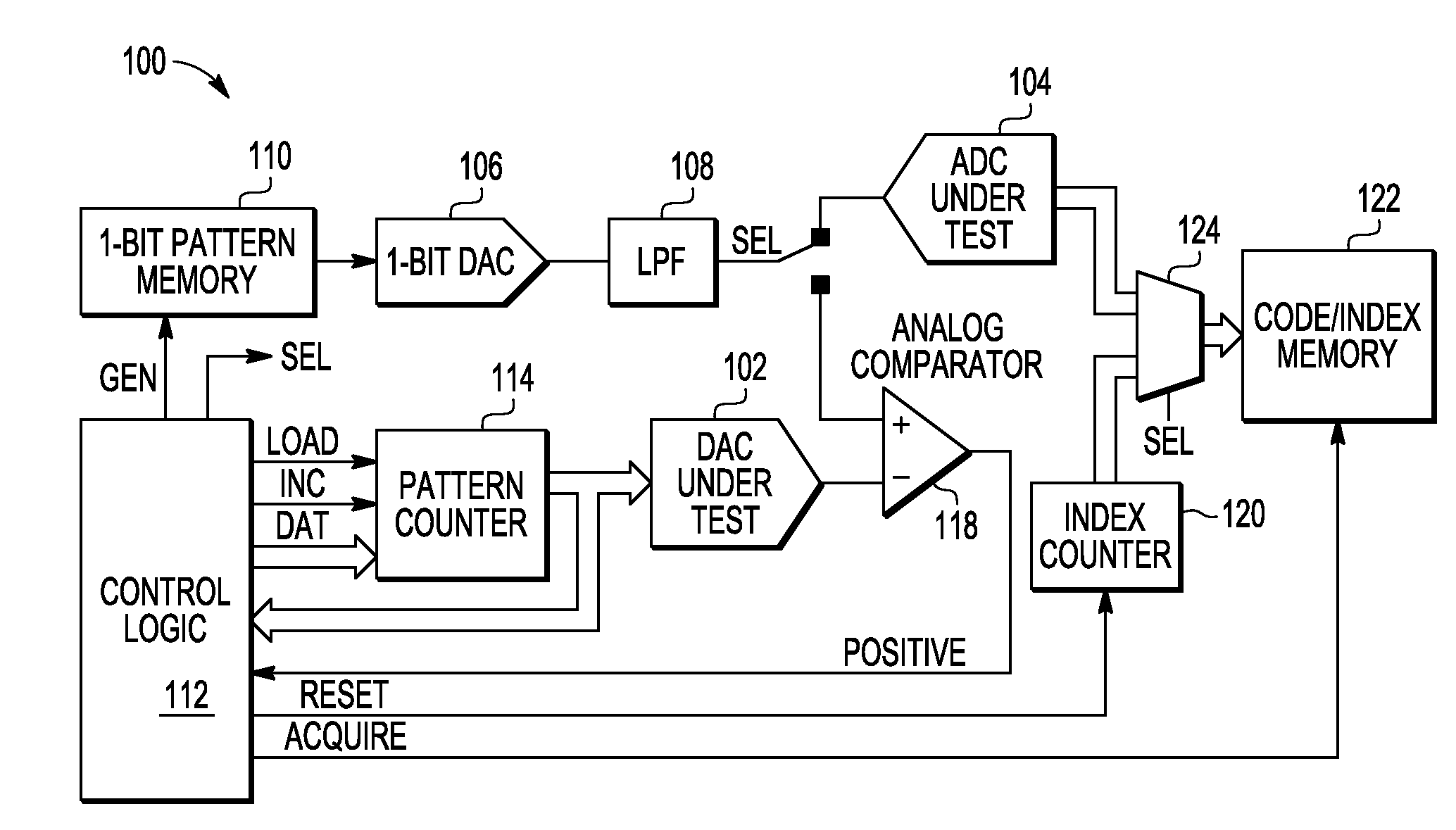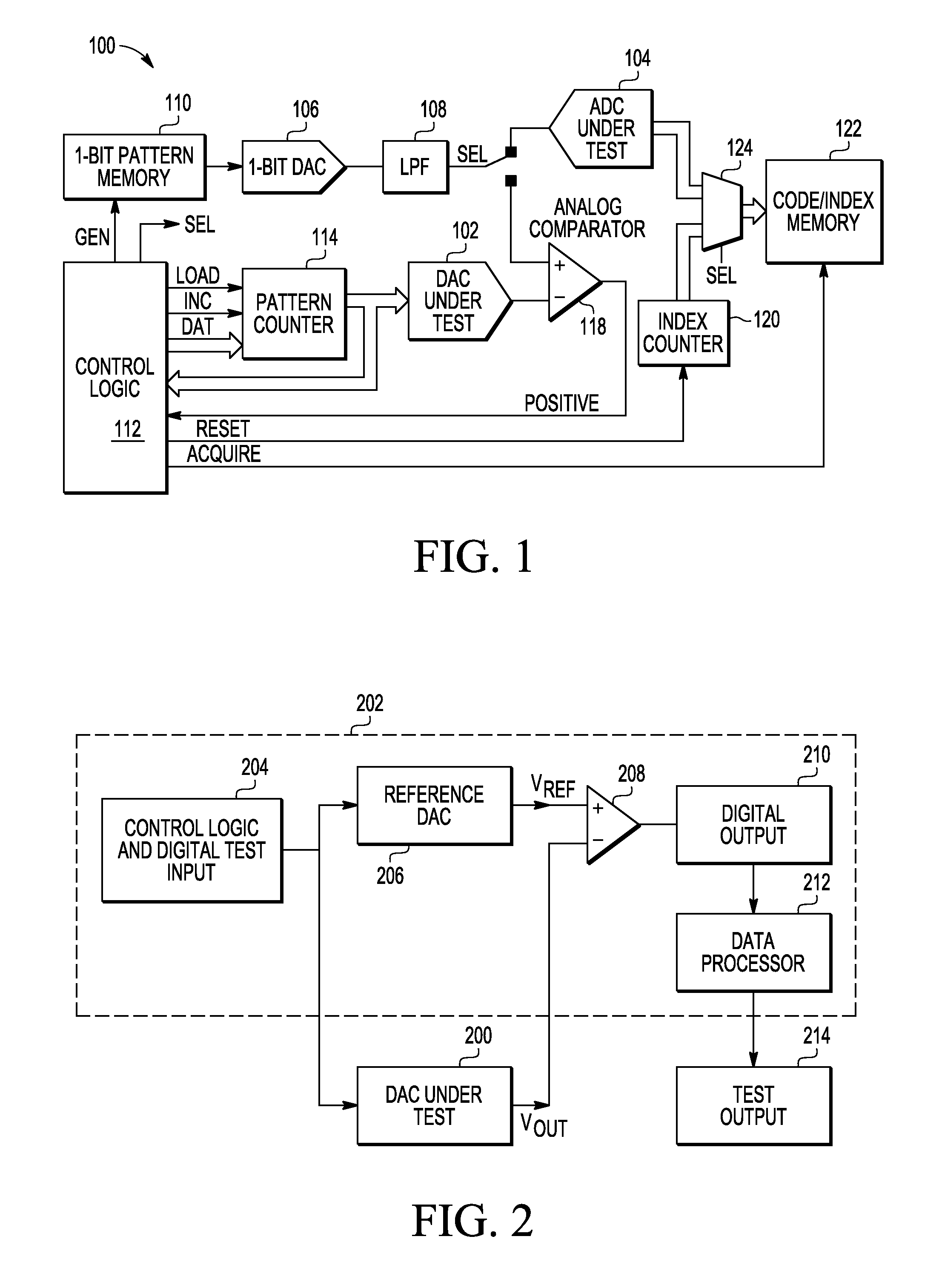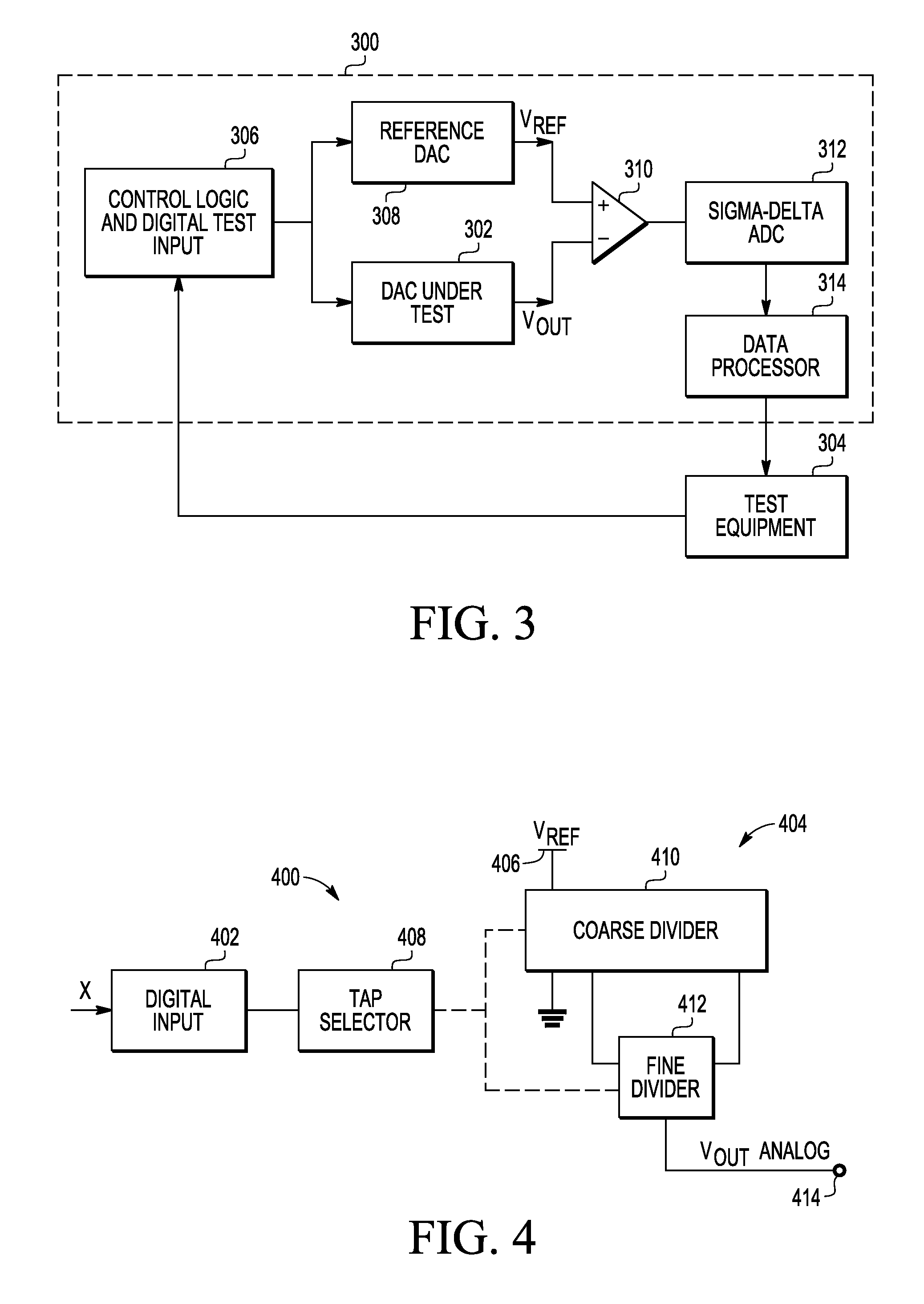Method of testing digital-to-analog and analog-to-digital converters
- Summary
- Abstract
- Description
- Claims
- Application Information
AI Technical Summary
Problems solved by technology
Method used
Image
Examples
Embodiment Construction
[0012]In one embodiment, the present invention provides a method of testing a converter for converting between a digital signal and an analog signal one of which is an input signal and the other of which is an output signal. The converter includes a coarse voltage divider having a set of repetitive coarse resistor elements and a fine voltage divider having a set of repetitive fine resistor elements, taps connected to respective positions in said sets of repetitive resistor elements, and a digital tap selector for coupling a selection of said coarse resistor elements with a selection of said fine resistor elements corresponding respectively to more significant and less significant bits of said digital signal The method of testing includes providing reference input signals corresponding to a first selection of said fine resistor elements with each of said selections of said coarse resistor elements in succession, measuring corresponding output signals of said converter, and using said...
PUM
 Login to View More
Login to View More Abstract
Description
Claims
Application Information
 Login to View More
Login to View More - R&D
- Intellectual Property
- Life Sciences
- Materials
- Tech Scout
- Unparalleled Data Quality
- Higher Quality Content
- 60% Fewer Hallucinations
Browse by: Latest US Patents, China's latest patents, Technical Efficacy Thesaurus, Application Domain, Technology Topic, Popular Technical Reports.
© 2025 PatSnap. All rights reserved.Legal|Privacy policy|Modern Slavery Act Transparency Statement|Sitemap|About US| Contact US: help@patsnap.com



